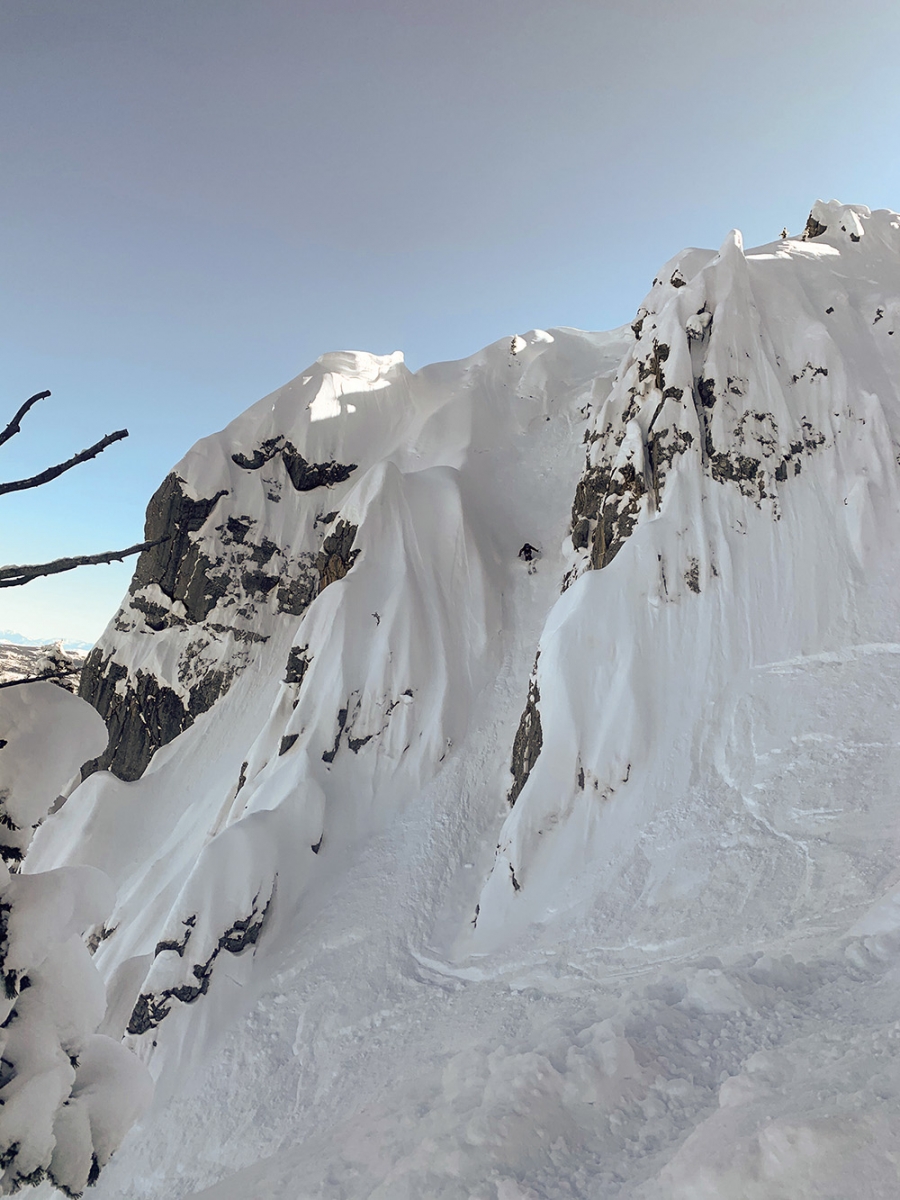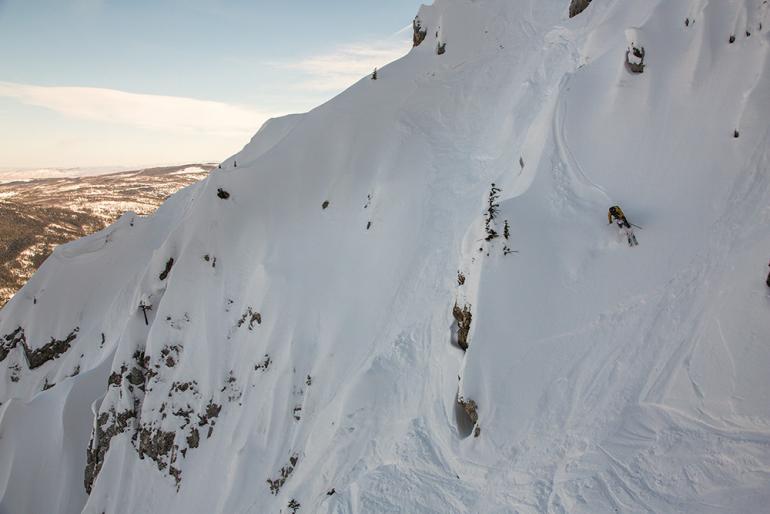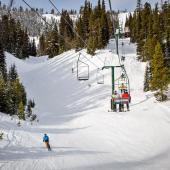I Ski Therefore I Am
Philosophical observations on Bridger's liveliest lines.
The unexamined life is not worth living.—Socrates
Hiking the bootpack to the top of the Bridger Ridge provides just enough time to lose myself in thought. I climb step-by-step, with peace of mind and admiration for the beauty around me—I think of it as bootpack meditation. There are people in front and behind me; from a distance we look like a line of ants crawling up a mound.
It’s a silly thing, really. Humans devote meaning to all aspects of life, and skiing is no exception. Terrain takes on greater significance when navigated on skis. Hunks of limestone become cliffs to jump off and narrow snow-filled notches become chutes to wiggle through. And sometimes, particularly on this hike, I wonder if there is a “right way” to ski.
In a time before mine, Tom Jungst named the chutes through the walls of Hidden Gully “the Virtues.” The ancient Greek stoics probably never imagined there’d be passages in rock walls dedicated to their ideologies, but maybe the answer I seek is in the terrain I travel through. Maybe the answer lies in the four clefts of rock corresponding with the cardinal virtues themselves: Prudence, Justice, Restraint, and Courage.
Prudence
Knowledge of what is good and bad; inherent wisdom encouraging caution. This virtue is basic, and like its corresponding ski run, a solid prerequisite to the remaining three.
From the skier’s right entrance of Hidden Gully, work your way past the chute’s easier alternate entrance, come around the corner and discover the top. When sticking your tips out over the edge, a spectacular south-facing cliff wall stares you down. Haphazardly dropping in and screaming toward the other side of Hidden is not a good idea. Skiing the First Virtue smoothly requires an understanding of Prudence—an awareness of what is good and bad in skiing.
When the First is filled in enough and the snow is good, you can make big turns through the entrance, and tighten them as you descend into the funneling pinch. From here, make a controlled right turn into the runout and hopefully score a faceshot. You’ll feel the smooth snow under your feet and realize the awesome absurdity of what you are doing. Moments like these are what make skiing so incredibly fun. But knowing your limits is important, and this can be assessed via the next virtue.
Justice
This is the state underlying a “law-abiding” way of life. For our circumstances, let’s refer to the National Ski Areas Association Responsibility Code when it says to not do anything that could seriously injure yourself or another.
This Second Virtue is more serious, and it’s just a few turns down from the First. The off-camber fall line at the start forces skiers to carefully traverse above or below a small boulder on the hanging snowfield. From here, skiing into Hidden becomes easier with every turn. But the wall on skier’s left makes it difficult to spot people below and ensure a clear outrun.
Getting a buddy to hang out below and check for traffic is always the best way to do this line justice. But equally important is risk management. Which brings us to the Third Virtue.
Restraint
Moderation of the soul; finding discipline in regulating pleasure and pain, an attempt to achieve balance. Practicing sustainable skiing is tricky, especially at the beginning of the season when you want to ski as hard as you were at the end of the previous season. The Third Virtue acts as an offering to demonstrate restraint, because there are a few different ways you can ski it.
Most seasons, this line stays relatively wide in the beginning with a straightforward entrance. But in low snow, it involves a difficult exit with either some airtime or a technical traverse out. If you’re feeling good, go fast and take flight, and prepare for a hot outrun. If you’re not feeling like pushing your limits, take it slower and keep your feet on the ground. You may even decide to head south, back to the Apron traverse, and get an easier run in. This virture has a variety of options, and when you’re feeling good and the conditions are prime, offers opportunity to take it up a notch. And with that kind of mentality, you might find yourself standing on top of the Fourth Virtue.
Courage
The state of the soul unfazed by fear. The Fourth Virtue is the most difficult and committing of the four chutes. After passing the Third, stay high on a spine of snow till you come to an extremely exposed position with a spectacular view to the north. At this point, there is no backing out. The rock walls on either side provide a singular steep and narrow path for your skis with only one option: speed.
Skiing this chute requires a great deal of courage.

Fourth Virtue
As I step onto the top of the ridge blanketed with a few inches of new snow, many others are gearing up anxiously. Taking a deep breath of cold, crisp air, my ego calms and my anxiety resides. I slow down. The snow-covered ridge shimmers and sparkles against the blue bird sky. I click into my skis, preparing to fully immerse myself in the next run. Maybe thinking about the four cardinal virtues will help. Maybe skiing one of them will help. Maybe my mind has wandered too far. Maybe it’s time to just go skiing and have fun.











